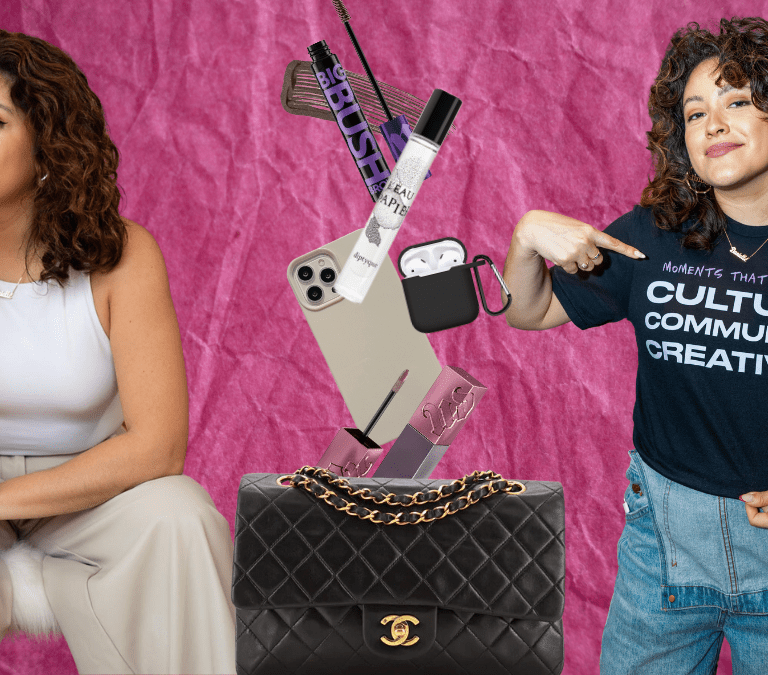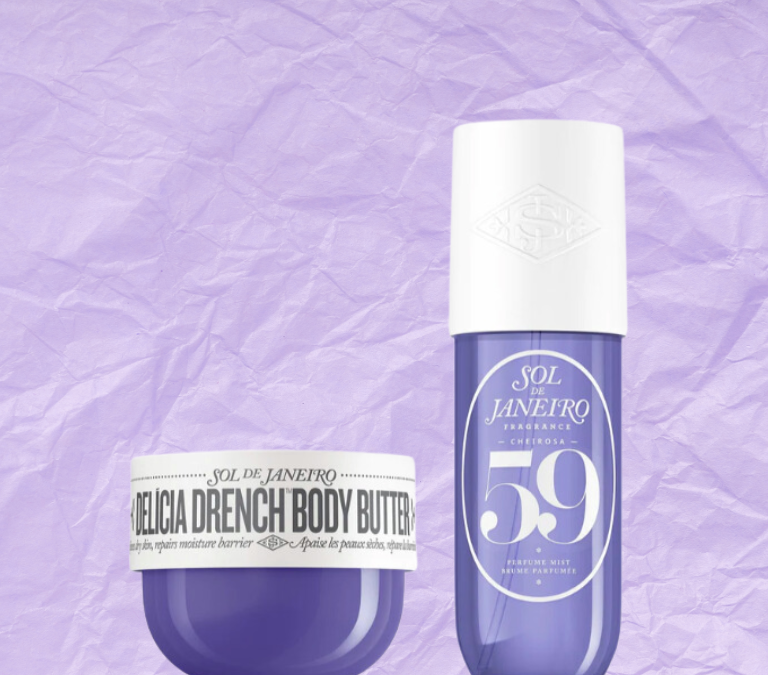When I stepped into the skin care aisle in grade school, I was sure my skin problems would be whisked away by the fancy bottles and copy writing promises. Even better if the products had before-and-after photos next to them.
What I didn’t realize at that time was that skin care wasn’t a one-size-fits-all situation. In fact, it’s often the exact opposite.
To find out what worked for me, my routine, and my budget, I needed to also work my way through psoriasis, hyperpigmentation, and the pressure I put on myself to look like a porcelain doll.
Throughout my journey I’ve discovered a few things that work and others that do not. More importantly, I’ve learned about eight skin-product myths that keep people from having a great relationship with their skin.
Myth #1: Use a ‘dime-sized’ amount of product
This myth started from hair care and somehow made its way into skin care. You may even see companies perpetuate this myth when they apply a fingertip amount in their advertisements.
When in doubt, use a little more product than the amount suggested on the back of the bottle. After all, everyone’s face — from size to absorbency — is different.
Two drops of face oil may be too much for balanced oily skin, but after it sinks into dehydrated, oily skin, it may turn out to be too little.
Tip: When it’s been a long day of touching your face, eating takeout, picking up another quarter you dropped at the coffee shop, you’ll want to treat your face to more than a dime-sized amount of cleanliness. (Same goes for sunscreen, as most people only apply 25 to 50 percent of the needed amount!)
Myth #2: You absolutely need a toner
A standard toner removes excess dirt and oil off the skin before you apply moisturizer. Depending on the brand, toners promise to help your skin look brighter or smoother.
While I do believe that toner can assist in your beauty routine, not everyone needs it. Too many products can cause build up or a lack of absorption of other products.
I eventually took a minimalist approach to my skin care journey and removed toner. In its place, I added a liquid cell rejuvenator that’s mostly made of aloe vera. It’s a great base to my moisturizer and gives me that bright glow while minimizing my pores.
Tip: If you use toner, I suggest looking up your toner and comparing it with the other products in your routine (check out SkinCarisma). You may find it overlaps or isn’t necessary at all.
Myth #3: Makeup wipes are the best way to remove makeup
If you’re prone to hyperpigmentation, makeup wipes can actually cause friction and slowly tear at the skin if you use daily. Plus, a lot of makeup wipes have alcohol, which can cause stinging for sensitive skin.
On regular days, I apply CeraVe SA Cleanser to my hands and wash my face. After, I wash with the soap again with my Vanity brush. You can also opt for an oil cleanse to melt off the day’s impurities.
Tip: If you choose to use makeup wipes, try to limit them for long nights out instead.
Myth #4: Price is a good indicator of how well a product works
My combination skin forces me to spend more money on skin products. But I don’t spend a lot on every product.
Sometimes a simple product that costs less and has less going on ingredient-wise pays off more. For example, my Trader Joes’ Tea Tree Oil Facial Wash is $13.99, but my Lancome Beinfait Multivital moisturizer with SPF 30 is $60.
When I can’t afford that moisturizer for the month, I opt for a Cetaphil moisturizer and Neutrogena’s Ultra Sheer sunscreen. Both keep my skin looking fierce!
Tip: You can easily learn to put your money where it matters by researching the star ingredient in your favorite products and seeing if there are “dupes” (AKA copycat products) that also highlight those ingredients.
Myth #5: Never touch your face with your hands
Skin myths can emerge from anywhere, especially word of mouth. You may have heard, “Avoid touching your face to prevent acne,” but touching alone isn’t the only thing breaking you out.
My dermatologist warned me about talking on the phone without headphones and scrolling on my phone and then touching my face afterward. Apparently our phones carry more bacteria than most toilet seats.
The skin issues I dealt with in high school returned after I began getting acrylic nails. Apparently long nails can carry the gunk from your entire day, and if there’s bacteria, it can travel to your face or even cause an infection underneath your nails.
Tip: When washing your hands, concentrate on getting underneath your nails!
Myth #6: A consistent routine is the key to preventing breakouts
A consistent skin care routine isn’t going to save you from breakouts, which can be caused by anything from internal gut health to stress.
In fact, an inflexible routine may hurt you in the long run — the weather can change, you may encounter unexpected stress, or your skin might also just stop responding to your favorite cream. When that happens, your routine needs an adjustment.
I believe in keeping the same base products, like face wash, but switching up other steps to achieve my goal. For example, I wear aloe vera gel under my moisturizer during the spring. In the summer, I wear a lighter moisturizer so I won’t look oily when the sun comes out.
Tip: Let your inner researcher splurge a little and try new products or formulations. And take advantage of the return policy; most brands understand their products aren’t one-size-fits-all and will gladly accept returns.
Myth #7: Viral threads and high reviews are an indicator of a good product
Your skin is one of a kind. Just because a “clear skin” thread went viral on Twitter doesn’t mean you should be concocting a lemon-and-baking-soda mask on a Tuesday night.
The goal is to avoid sending your skin into shock. According to research, it can take anywhere from 6 to 20 weeks to really see a change in skin once a new product has been introduced. Of course, the time depends on the ingredients and what kinds of changes you’re looking for.
Tip: If you do want to look at reviews of the product, look at the four- to three-star section for a more balanced perspective. The best reviews are the ones that include a before and after of someone who has the same skin tone, skin concerns, and skin type as you.
Myth #8: You don’t need a dermatologist
One of my biggest mistakes was self-testing products until I found one that worked. For many others, this means not learning your skin type or even the actual condition (remember there are different types of acne, and they all respond to different treatments).
But dermatologists are doctors for your skin. They can tell you things that other people can’t, with the scientific education and experience to back it up.
How do you know it’s working? What breaks you out? Is your skin going into shock because of a new product, or are the ingredients not a fit for your skin?
These questions are ones dermatologists can help you answer — or even start asking.
Tip: Access and cost are some of the biggest issues related to dermatologist visits. If your provider won’t cover visits or treatment, there are new facial recognition apps that can help. Similar to Curology, a tele-derm based service, these apps use selfies to help you decide what kind of skin treatment you need.
You may want to see if there’s a dermatologist who charges based on income. This kind of payment is usually based on the income of the individual and can be set at a reasonable rate.
A lot of skin knowledge is trial and error
Most of these myths I learned about after a grueling journey to clear and healthy skin. I didn’t see progress until I decided to take control of what healthy skin looks like for me — and not based on what others did.
That included accepting my hyperpigmentation, controlling my psoriasis, and letting beauty marks accent the beauty I naturally possessed.
Taylor Ramble is a skin enthusiast, freelance writer, and film student. For the past five years she’s worked as a freelance writer and blogger focusing on topics from wellness to pop culture. She enjoys dancing, learning about food and culture, as well as empowerment. Right now she works at The University of Georgia’s Virtual Reality Lab focusing on the impact of advancing technologies on behavior and wellness.
Original Article
Photo by Ronise Da Luz on Unsplash
These 8 Beauty Myths Aren’t Doing Your Skin Any Favors




